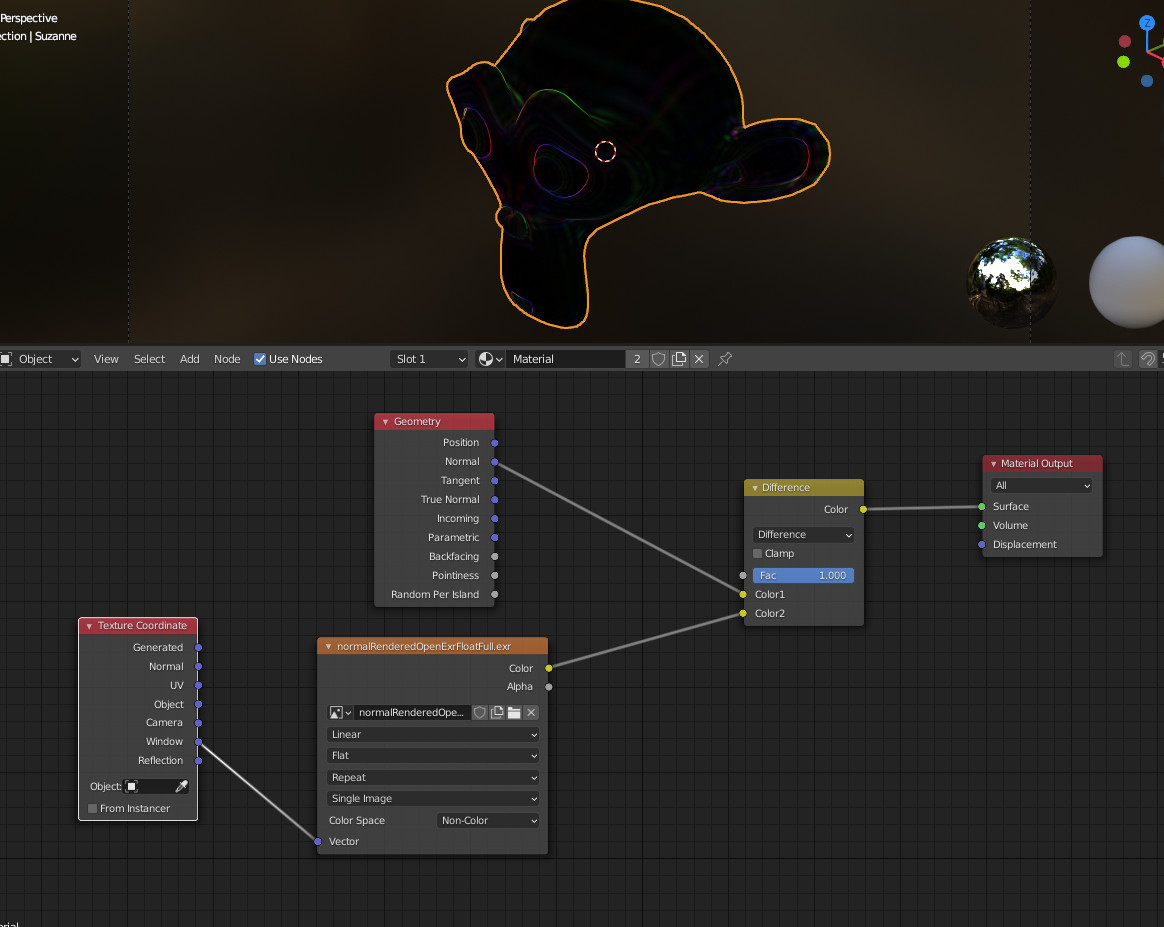I am trying to render the Normal output of the geometry node, and then bring that back as a window projected texture. But when I do, the image is very different from the original socket output:

Why is my image different, when its literally just a render of the same thing? I am aware of color management distorting the render. I have tried rendering with different Display Devices, View Transforms, both .png and .exr, different color spaces on the texture node, disabling Save as Render, etc.
From my understanding, being in Display Device: sRGB, Standard view transform, and then setting the texture node to Linear or Non-Color Data ought to work, but it doesn't. What else could be going on?



